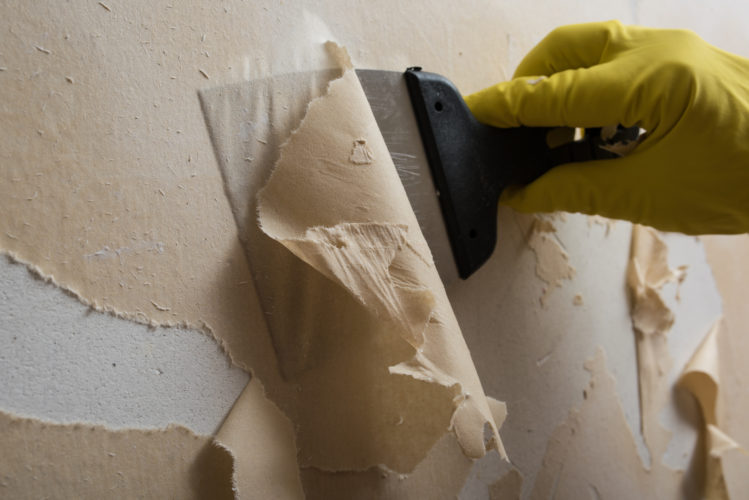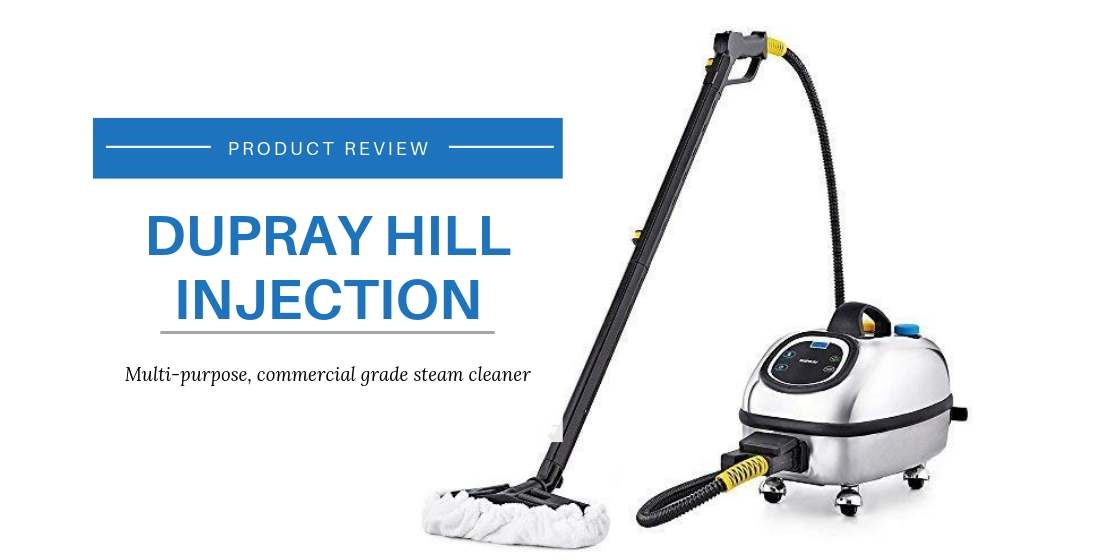Getting rid of old wallpaper is the first step in changing the outdated wall coverings in your home to a modern coat of paint. The removal process can sometimes be a messy and time-consuming project, but in the long run, removing old wallpaper can save you from future headaches.
Even though there are various methods of removing wallpaper, using a steam cleaner may be the most effective wallpaper removal technique. A steamer is a tool that uses boiling water to soften the glue between the wallpaper and your wall. In just a few simple steps, steamers can remove stubborn wallpaper and, as a result, create a smooth finish ready for painting and redecorating.
If you want to learn how to use a steamer to remove your old-fashioned wallpaper, you’ve come to the right place.
Do I Need to Use a Steamer to Remove Wallpaper?
First off, before you begin to remove your wallpapers with a steamer, determine what kind of wallpaper you have. Most newer wallpapers are strippable. That means they don’t require water or chemicals to remove.
To check if your wallpaper is strippable, use a putty knife to pry the bottom seam or corner of a panel of wallpaper loose and try pulling it up. If the wall covering comes away effortlessly, you don’t need to steam clean your wallpapers.
On the other hand, if that doesn’t work, you will need to loosen the wallpaper glue with steam before successfully removing it.
How to Remove Wallpaper With a Steamer
Using a steamer to remove wallpaper has plenty of advantages. Hot steam acts in a way that naturally dissolves the wallpaper adhesive, enabling you to peel away that layer of wallpaper. Best of all, it helps to avoid needing to use harsh solvents like chemical wallpaper strippers. Not only are they costly, but they can release toxic materials in your home. Removing wallpaper with a steamer is not only more cost-effective, but is also safer for both you and the environment.
To that end, here’s a step-by-step guide on how to remove wallpaper with a steamer.
Prepare Everything Before You Start
There are several preliminary steps you should take before beginning the actual process of wallpaper removal. Firstly, remove all furniture and area rugs from the room and cover the floor with plastic or a tarp to protect your floor.
Secondly, make sure to remove all electrical faceplates from light switches, sockets, and telephone jacks. Afterwards, cover the outlets and switches with tape to protect them from liquids. Remember that a wallpaper steamer puts out a large amount of moisture, so open a window to prevent excess moisture from building up
When working with steamers, it’s best if you wear gloves and some kind of eye protection since this tool releases hot water.
Perforate the Old Wallpaper
While the steamer is warming up, use a wallpaper-perforating tool such as the ‘Paper Tiger’ in a circular motion. This is essentially a roller with small spikes that will leave tiny holes in the paper. It helps the steam to penetrate and dissolve the adhesive. Be careful, though: If you press too hard, you can damage the wall. This will then require you to fill the nicks with spackle before painting.
Apply steam to the wallpaper
Fill up your steamer with water, plug it in, and let it heat up. Consult your user manual for best practices. Make sure not to overfill the tank, as it may damage the steamer if the tank is too full. Turn the machine on and wait for the water to boil. Steam comes out of the pad when the device is ready to use. Place the steamer pad on the surface of the wallpaper and hold it long enough to allow the steam to penetrate the paper and soften the glue.
If you apply too little steam, the wallpaper will be difficult to remove and if you apply too much steam, you can potentially damage the drywall. The amount of time you’ll need to leave the steamer on the wall will depend on how strong the adhesive is and how long the wallpaper has been on the walls.
Also, the type of steamer you’ll use will depend on different factors. You can usually get away with a clothing steamer for the most part. However, if you’re dealing with a large surface area, it’s best to rent a commercial wallpaper steamer. We find it to be better and more cost-effective than buying one.
Start Scraping Away

Once the wallpaper is loosened, use a scraper to remove it. Use a wallpaper scraping tool or a drywall knife — be careful not to tear through the drywall. Remember, don’t try to pull the wallpaper with your bare hands because the glue and paper could potentially cause burns. This process can sometimes require extra time, but the more effort you dedicate to steaming, the less time you’ll spend scraping. Continue until all of the wallpaper and any backing are removed.
Clean, Repair and Refinish the Walls
To ensure your walls are squeaky clean, prepare a bucket of very hot water mixed with a small amount of trisodium phosphate (you can find it at most hardware stores). Use a sponge to wipe down the walls with this solution to remove all traces of wallpaper adhesive. Finally, sponge the walls with clean water and towel dry as best you can. Now, you’re ready for painting.
Bottom Line
Trying to remove your old wallpaper may seem like a big home improvement job, but it’s certainly worth it. Upgrading your walls is a great way to change the design and decor of your home, and using a wallpaper steamer makes this project faster, easier, and more cost-effective than any other method on the market (when done correctly).
Try this step-by-step routine to help remove wallpaper with a steamer and enjoy a more modern look and feel in your home. By following our advice, your house decor will look brand new in no time.
